
by Pigeon Patrol | Mar 29, 2022 | 4-S Gel Bird repellent, Animal Deterrent Products, Bird Deterrent Products, Bird Law, Bird Netting, Bird Spikes
Q. What can you tell me about pigeons’ nests? We just moved into a fifth floor apartment and there’s what looks like some kind of a bird’s nest on the ledge around our balcony, except it has sticks and debris in it. If it is a pigeon’s nest, will they come back to the same nest this year?
A. A ledge high on a building would be a typical nest site for pigeons (also called rock doves) since their natural nest site is in caves or crevices on rocky cliffs. In urban areas, pigeons nest in a variety of sites, but rarely in trees. Their only requirement is a dry, protected area and a flat surface upon which to nest and perch. Nests are usually high up on roofs, ledges, eaves, attics, or steeples, or under bridges or overpasses.
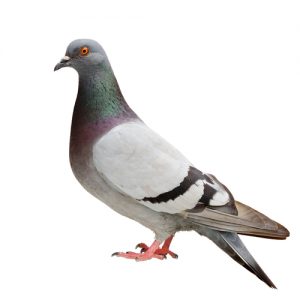 The male starts the nest building process by sitting on the nest site and calling for a mate. Once he has attracted a female to the site, he begins the search for nest material, bringing a single twig at a time to the female who tucks it in around her. During the day, the male sits on the completed nest that usually contains one or two eggs. The female takes over nest duties at night. Pigeons can nest year round and can produce up to 10 young a year.
The male starts the nest building process by sitting on the nest site and calling for a mate. Once he has attracted a female to the site, he begins the search for nest material, bringing a single twig at a time to the female who tucks it in around her. During the day, the male sits on the completed nest that usually contains one or two eggs. The female takes over nest duties at night. Pigeons can nest year round and can produce up to 10 young a year.
A pigeon’s nest is not a thing of beauty; it’s rather a mess. It’s made up of a conglomeration of sticks, small twigs, grass stems, pine needles, and debris — all piled together with a small cup depression in the center. Nests that are in continuous use are soon full of feathers and droppings. Unlike most other birds, pigeons do not remove the droppings of the young from the nest. The accumulated droppings tend to cement all of the nest materials together into a mound. And, yes, the pair usually does reuse the same nest site. They add new nest material right on top of the old sticks and droppings. Reused nests can even contain unhatched eggs and mummies of dead pigeon babies. Nests that have been reused for 3 to 4 years can be almost 8 inches high by 20 inches wide and can weigh more than 4 pounds!
You should discuss the problem with your property manager. You don’t want a pigeon’s nest on or near your balcony. The nest can harbor parasites such as bird mites and lice that can bite people. Droppings below the nest can deface the building, sidewalks, and cars, and large accumulations of droppings may contain disease organisms. Whoever removes the nest should wear gloves, and should discard the nest in a sealed plastic bag.
There are various types of deterrents and repellents that can be used to keep birds from nesting on the balconies or ledges of your building. A reputable pest control company that specializes in bird control can discuss the options.
Source
Pigeon Patrol Products & Services is the leading manufacturer and distributor of bird deterrent (control) products in Canada. Pigeon Patrol products have solved pest bird problems in industrial, commercial, and residential settings since 2000, by using safe and humane bird deterrents with only bird and animal friendly solutions. At Pigeon Patrol, we manufacture and offer a variety of bird deterrents, ranging from Ultra-flex Bird Spikes with UV protection, Bird Netting, 4-S Bird Gel and the best Ultrasonic and audible sound devices on the market today.
Voted Best Canadian wholesaler for Bird Deterrent products ten years in a row.
Contact us at 1- 877– 4– NO-BIRD, (604) 585-9279 or visit our website at www.pigeonpatrol.ca
Pigeon/Pigeon Patrol / Pigeons Roosting / Vancouver Pigeon Control /Bird Spikes / Bird Control / Bird Deterrent / Pigeon Deterrent? Surrey Pigeon Control / Pest /Seagull deterrent / Vancouver Pigeon Blog / Birds Inside Home / Pigeons in the cities / Ice Pigeons/ What to do about pigeons/ sparrows , Damage by Sparrows, How To Keep Raccoons Away, Why Are Raccoons Considered Pests/ De-fence / Pigeon Nesting/ Bird Droppings / Pigeon Dropping/ woodpecker control/ Professional Bird Control Company/ Keep The Birds Away/ Birds/rats/ seagull/pigeon/woodpecker/ dove/sparrow/pidgeon control/pidgeon problem/ pidgeon control/flying rats/ pigeon Problems/ bird netting/bird gel/bird spray/bird nails/ bird guard
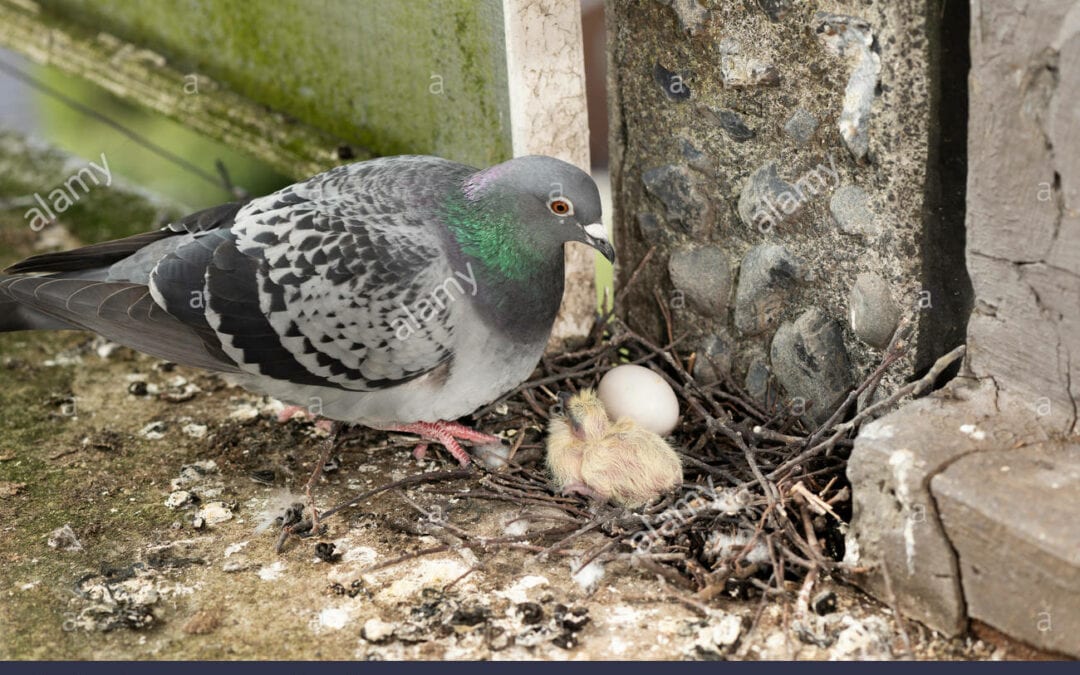
by Pigeon Patrol | Mar 21, 2022 | 4-S Gel Bird repellent, Animal Deterrent Products, Bird Deterrent Products, Bird Law, Bird Netting, Bird Spikes
The development of cities and urban sprawl has made room for wildlife inhabiting human environments. Among birds, feral pigeons (Columba livia domestica) are often present in large numbers in the cities. Problems related to pigeon occurrence result in economic loss and health issues for humans. There are different methods of controlling pigeon populations in urban areas. In this study, we compared three techniques that can be used for pigeon pest control. In two urban industrial sites in Hungary, we used trapping, falconry (in both Study Area 1 and 2) and mist-netting (only in Study Area 2) to remove pigeons. We compared the effectiveness and limitations of each method. Our results show that over 105 days in Study Area 1, we managed to remove 173 individual pigeons. We did not find a significant difference between the effectiveness of trapping or falconry. In Study Area 2, the overall number of pigeons removed was 1412 over a period of 150 days. There, we managed to catch significantly more birds by netting than by trapping or falconry, but the latter two did not differ statistically. We recommend a combination of techniques for pigeon control. Mist-netting can be the most effective way for direct pigeon removal, whereas trapping is an easier but less efficient method to catch pigeons. Falconry is the least efficient in pigeon catching and requires the most investments, but the bird of prey may chase the pigeons away for a short time.
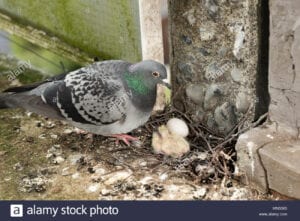
Source
Pigeon Patrol Products & Services is the leading manufacturer and distributor of bird deterrent (control) products in Canada. Pigeon Patrol products have solved pest bird problems in industrial, commercial, and residential settings since 2000, by using safe and humane bird deterrents with only bird and animal friendly solutions. At Pigeon Patrol, we manufacture and offer a variety of bird deterrents, ranging from Ultra-flex Bird Spikes with UV protection, Bird Netting, 4-S Bird Gel and the best Ultrasonic and audible sound devices on the market today.
Voted Best Canadian wholesaler for Bird Deterrent products ten years in a row.
Contact us at 1- 877– 4– NO-BIRD, (604) 585-9279 or visit our website at www.pigeonpatrol.ca
Pigeon/Pigeon Patrol / Pigeons Roosting / Vancouver Pigeon Control /Bird Spikes / Bird Control / Bird Deterrent / Pigeon Deterrent? Surrey Pigeon Control / Pest /Seagull deterrent / Vancouver Pigeon Blog / Birds Inside Home / Pigeons in the cities / Ice Pigeons/ What to do about pigeons/ sparrows , Damage by Sparrows, How To Keep Raccoons Away, Why Are Raccoons Considered Pests/ De-fence / Pigeon Nesting/ Bird Droppings / Pigeon Dropping/ woodpecker control/ Professional Bird Control Company/ Keep The Birds Away/ Birds/rats/ seagull/pigeon/woodpecker/ dove/sparrow/pidgeon control/pidgeon problem/ pidgeon control/flying rats/ pigeon Problems/ bird netting/bird gel/bird spray/bird nails/ bird guard
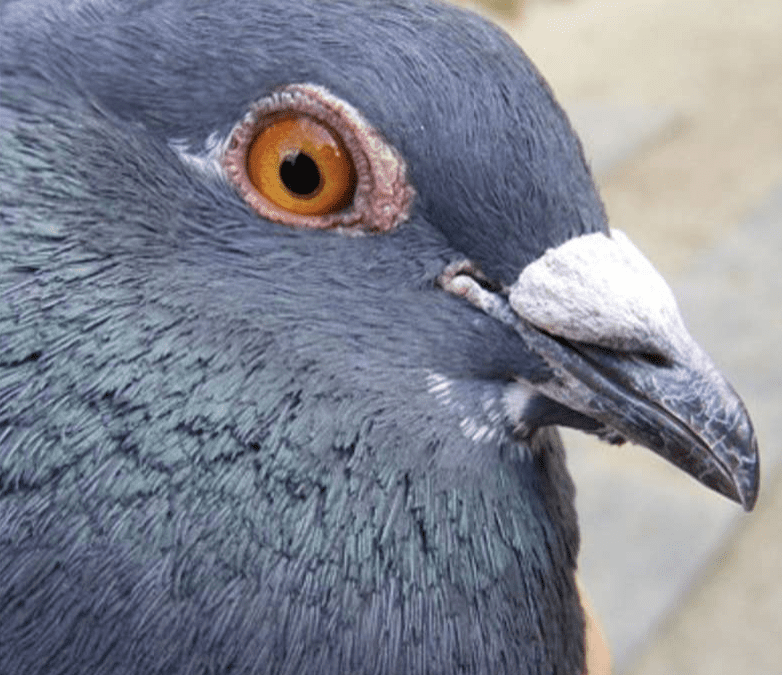
by Pigeon Patrol | Mar 7, 2022 | 4-S Gel Bird repellent, Animal Deterrent Products, Bird Deterrent Products, Bird Law, Bird Netting, Bird Spikes
Being a peregrine fanatic I’m kind of fond of pigeons – at least from the prey point of view – so when I was in downtown Pittsburgh on Sunday I stopped by Mellon Square to check out the scene.
Even for a peregrine falcon the number of pigeons at Mellon Square is way too much of a good thing. I counted more than 150 and I couldn’t see all of them. The pigeons outnumbered people more than 30 to 1.
This explains why peregrines hang out on the Oliver Building window sills. It’s like visiting an all-you-can-eat restaurant. The food may not be that great but there’s so much of it!
This kind of pigeon over-population repulses most people and they want a quick fix, the quickest being poison. But if you poison a pigeon, you’ll poison a peregrine. After a culling episode pigeons reproduce fast to fill the void – in fact lethal control actually increases the flock – but the peregrines take years to recover. And peregrines are endangered in Pennsylvania. It’s bad, bad, bad to poison an endangered species.
So what to do?
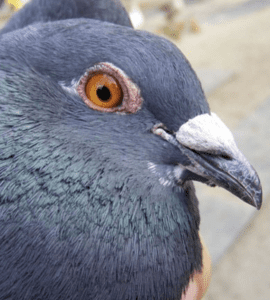
Pigeons need two things to reach the numbers found at Mellon Square: lots of food and places to nest. They reproduce in direct proportion to their food supply. If food is scarce some won’t nest at all. If food is plentiful they lay the next clutch of eggs before the first set has hatched, producing more than 12 chicks per year.
The food problem is obvious. Sidewalks at Mellon Square are coated with bird seed. Control the food source (the people who feed them) and you’ve got most of the problem licked. To make a really dramatic difference, control the nest sites as well.
City pigeons nest on buildings and bridges. They also nest in buildings. Find the buildings involved and spend the time and money to block the access holes. Last summer the University of Pittsburgh cleaned the Cathedral of Learning and blocked off the pigeon nest holes as part of the cleaning job. One year later there are far fewer pigeons at Schenley Plaza.
And finally, there’s a foolproof solution that makes both the pigeon-feeders and the pigeon-haters happy. Many European cities have solved their pigeon problem permanently by building dovecotes and pigeon lofts. Yes, they built nest sites. They control the population at the dovecotes by substituting dummy eggs and they control the food level by giving pigeon lovers an approved place to feed and interact with the birds.
This keeps the pigeons and the birdseed off the street. An elegant solution.
Source
Pigeon Patrol Products & Services is the leading manufacturer and distributor of bird deterrent (control) products in Canada. Pigeon Patrol products have solved pest bird problems in industrial, commercial, and residential settings since 2000, by using safe and humane bird deterrents with only bird and animal friendly solutions. At Pigeon Patrol, we manufacture and offer a variety of bird deterrents, ranging from Ultra-flex Bird Spikes with UV protection, Bird Netting, 4-S Bird Gel and the best Ultrasonic and audible sound devices on the market today.
Voted Best Canadian wholesaler for Bird Deterrent products ten years in a row.
Contact us at 1- 877– 4– NO-BIRD, (604) 585-9279 or visit our website at www.pigeonpatrol.ca
Pigeon/Pigeon Patrol / Pigeons Roosting / Vancouver Pigeon Control /Bird Spikes / Bird Control / Bird Deterrent / Pigeon Deterrent? Surrey Pigeon Control / Pest /Seagull deterrent / Vancouver Pigeon Blog / Birds Inside Home / Pigeons in the cities / Ice Pigeons/ What to do about pigeons/ sparrows , Damage by Sparrows, How To Keep Raccoons Away, Why Are Raccoons Considered Pests/ De-fence / Pigeon Nesting/ Bird Droppings / Pigeon Dropping/ woodpecker control/ Professional Bird Control Company/ Keep The Birds Away/ Birds/rats/ seagull/pigeon/woodpecker/ dove/sparrow/pidgeon control/pidgeon problem/ pidgeon control/flying rats/ pigeon Problems/ bird netting/bird gel/bird spray/bird nails/ bird guard
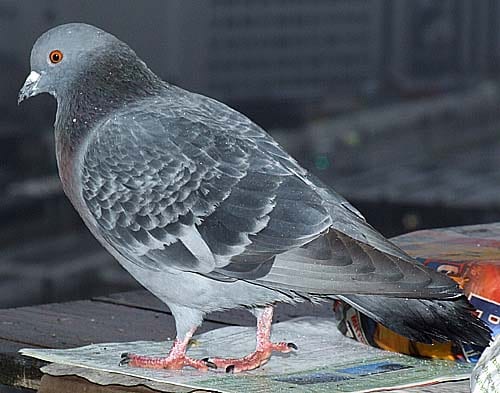
by Pigeon Patrol | Feb 22, 2022 | 4-S Gel Bird repellent, Animal Deterrent Products, Bird Deterrent Products, Bird Law, Bird Netting
Anyone who has lived in an urban environment has seen stringfoot pigeons; many wonder how the feet of these birds come to be bound and twisted, but few people seem to realize that something can be done to alleviate the suffering of these beautiful birds. Although I am a recent arrival to the world of destringing pigeons, this practice is certainly not a new phenomenon. The most perfunctory online search reveals a variety of stories from at least the last few decades of individuals who undertake pigeon destringing, and there are undoubtedly countless other individuals whose destringing activities have gone completely unnoticed and unheralded.
Not long ago I came across the intriguing case of British author and critic Naomi Lewis, noted for her animal advocacy and her pigeon rescue efforts. It isn’t clear precisely when her pigeon destringing efforts started. She moved with her family to London’s Red Lion Square in 1935 and lived there until her death in 2009; her apartment became a haven for injured creatures and famously off limits to visitors, although “she was once observed releasing a convalescent pigeon from one of the windows.”[i]An article from the London Times in 1995 commented on the plight of stringfoot pigeons in the city, and on Lewis’ activities — when the article was written, Lewis was already in her 80s: “The writer Naomi Lewis goes round London with a small pair of scissors especially to help them. She has become expert at spotting pigeons in this plight, pouncing on them, picking them up, and cutting them free.”[ii]More recently, an author once acquainted with Lewis noted her passion for rescuing stringfoot pigeons: “Luckily for them, she knew where they were. During her hours of cycling around and wandering the streets, distributing bird seed, she had learned where the crippled ones lived. Imagine her patience – the endless searching, trudging, scattering, waiting, day after day, until she eventually caught them.”[iii]The image of Lewis, an elderly, “diminutive, velvet-clad woman,”[iv]bicycling and trudging about London in search of stringfoot pigeons is compelling and inspiring. Perhaps part of what draws me to the story of Lewis is that articles that mention her (including her obituaries) suggest, in the nicest way possible, that she was quite an eccentric, and her attraction to urban pigeons seems to be one of the factors that contributed to this assessment of her character. We who love pigeons are keenly aware that this love is often equated with eccentricity.
Judging by the reactions I have seen among people on the street who witness the process of pigeon destringing, it is an activity generally perceived as eccentric, and at first the reasons it is needed and done are difficult for observers to grasp. But once these somewhat confused and often skeptical bystanders understand what is going on and why, they are just as often supportive of efforts on behalf of pigeons and some are even anxious to participate. The evidence before their eyes helps to convince observers of both the beauty of these birds and our responsibility to help them. The destringing of urban pigeons can be seen as much more, therefore, than simply an effort to assist wild creatures to have lives free of suffering. It is one more way that we pigeon champions can help to normalize the public perception of all pigeons as valued and valuable creatures.
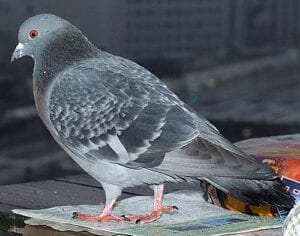
The Destringing Process in Action
What is the experience of destringing a pigeon like, and how is it done? There are many others who have been destringing for years, have handled countless stringfoot pigeons, and are so much more well-qualified than I to discuss this experience. With apologies, therefore, for my inexperience, I’d like to recount one of my own destringing experiences in San Francisco as a way of introducing the destringing process in general.
- Finding a stringfoot pigeon
Last week, a Muni failure forced me off the train at Church and Duboce. I had my destringing kit with me; I was headed for the Embarcadero, where there is a large population of stringfoot pigeons. Walking towards Market Street, I passed the Safeway parking lot and caught a glimpse of a pigeon flock there, browsing, preening, and flirting. Just in case, I stopped to check on them — and immediately spotted a beautiful white and grey girl with string on her feet, her feet bound together, barely able to walk.
- Catching the stringfoot pigeon
A crucial aspect of the destringing process is, of course, catching the pigeon. This is an acquired skill (one I am still working on), that requires much practice and patience. For those living in cities that are fortunate enough to have Stringfoot Pigeon groups, one of the best ways to learn how to catch pigeons is one-on-one expert coaching. Destringers seem to each develop their own approach to catching birds. For myself, I find that the position and disposition of the pigeon are the most important factors. I have the greatest likelihood of success if the pigeon is facing towards me (can’t easily fly away); is hemmed in by other birds; and has shifted its attention from me to the food I am dropping. After three tries and almost giving up all hope, I managed to catch this white and grey stringfoot girl.
- Destringing
The actual destringing can range from a simple process, when the string or hair is easy to see, loosely wound, and easily removed, to a monumental challenge when the material is voluminous, woven in complex layers, deeply embedded in the foot, or has already caused a lot of tissue damage and deformity. Although each case is very different, at the most basic level the process involves spraying the foot with something like Vetricyn to clean, loosen, and soften the fibers, dirt, and any dead tissue; and then very gently loosening, cutting, and unwinding fibers from the foot. Unwinding when possible instead of simply cutting helps to ensure that no hair or thread remains embedded in the skin. Fortunately for me and for this pretty pigeon, her string — which looked like a combination of twine and dental floss — was easy to see and remove, although cutting into her foot quite deeply.
- Releasing the pigeon
Of course, once the pigeon’s feet are free and disinfected, the pigeon should be released back where caught and, if possible, in sight of her flock, who she will want to join quickly in order to recount her unpleasant adventure.
- Why we do it, when we shouldn’t, and how you can help
One of the factors that motivates me to destring stringfoot pigeons seems so self-evident that it almost goes without saying: these pigeons cannot remove string from their own feet. If you take a moment to really consider this simple fact, however, the enormity of it can be overwhelming. To realize this fact is to accept the knowledge that each and every stringfoot pigeon will live their entire lives in ever-increasing pain, acquiring infections, losing digits and feet, and becoming unable to perform the basic activities required to live, unless a human sees their need, picks them up, and frees their feet.
Alongside the recognition of this need, destringers also have to realize their own limitations. Even in the brief time I have been destringing, I have seen heartbreaking examples of pigeons with deformed and painful stringfeet who I simply could not catch. The numerous destringers who have more experience than I must have countless such stories. Jodie Foreman, who started the “San Francisco Pigeons – Stringfoot help” group and several groups in other US cities, told me that when she is out but does not have her destringing kit with her, she tries to resist looking at pigeons (I believe she now carries her kit at all times!). Although it is hard to resist, there is no advantage to catching a stringfoot pigeon if one is unprepared to destring, and destringers advocate against removing any pigeon from its flock, its mate, and possibly its babies.
There are many resources available for anyone interested in helping to free the feet of these beautiful birds. The facebook group “San Francisco Pigeons – Stringfoot help” (and groups in Denver, Chicago, Washington, Seattle, and Los Angeles) provides a wealth of information about finding, catching, destringing, and the complex issues that can arise in the destringing process. Experienced destringers on these forums give generously of their time to answer questions, give advice, and provide training.
There are few forms of wildlife rescue that demand as little from the rescuer as destringing stringfoot pigeons. If you are willing to do some research, buy a handful of supplies, and you have a bit of time, you can doubtless find stringfoot pigeons in need of help near you, regardless of where you are. And it is difficult to imagine another rescue activity that can provide the same level of instantly transformative relief from pain and disability, and lasting impact on quality of life, as freeing the feet of these gentle and beautiful creatures.
Source
Pigeon Patrol Products & Services is the leading manufacturer and distributor of bird deterrent (control) products in Canada. Pigeon Patrol products have solved pest bird problems in industrial, commercial, and residential settings since 2000, by using safe and humane bird deterrents with only bird and animal friendly solutions. At Pigeon Patrol, we manufacture and offer a variety of bird deterrents, ranging from Ultra-flex Bird Spikes with UV protection, Bird Netting, 4-S Bird Gel and the best Ultrasonic and audible sound devices on the market today.
Voted Best Canadian wholesaler for Bird Deterrent products ten years in a row.
Contact us at 1- 877– 4– NO-BIRD, (604) 585-9279 or visit our website at www.pigeonpatrol.ca
Pigeon/Pigeon Patrol / Pigeons Roosting / Vancouver Pigeon Control /Bird Spikes / Bird Control / Bird Deterrent / Pigeon Deterrent? Surrey Pigeon Control / Pest /Seagull deterrent / Vancouver Pigeon Blog / Birds Inside Home / Pigeons in the cities / Ice Pigeons/ What to do about pigeons/ sparrows , Damage by Sparrows, How To Keep Raccoons Away, Why Are Raccoons Considered Pests/ De-fence / Pigeon Nesting/ Bird Droppings / Pigeon Dropping/ woodpecker control/ Professional Bird Control Company/ Keep The Birds Away/ Birds/rats/ seagull/pigeon/woodpecker/ dove/sparrow/pidgeon control/pidgeon problem/ pidgeon control/flying rats/ pigeon Problems/ bird netting/bird gel/bird spray/bird nails/ bird guard
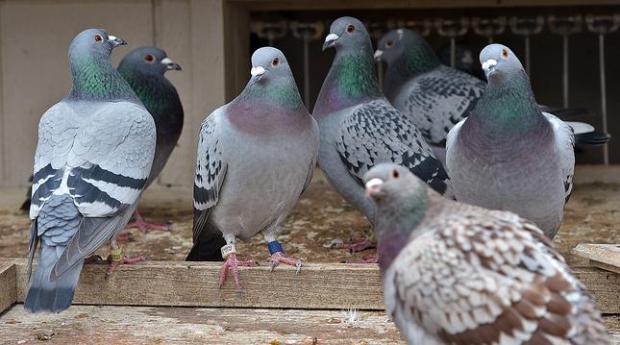
by Pigeon Patrol | Feb 7, 2022 | 4-S Gel Bird repellent, Animal Deterrent Products, Bird Deterrent Products, Bird Law, Bird Netting, Bird Spikes
Mattawa’s pigeon feeders have been warned—the free lunches stop now.
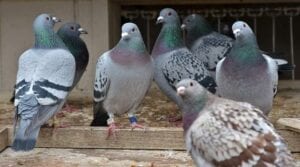
Council recently approved a bylaw prohibiting the feeding of pigeons, a ban that encompasses the entire municipality.
Cracked corn, seeds, cereal grains, wheat, and barley make delectable dishes for pigeons, and many people enjoy indulging this aviary desire to while away some time, or to make the birds’ lives a little easier.
But for Mattawa residents the practice is no longer accepted. And those who continue distributing the seed may be fined $250.
See: Pigeon poop proves a problem. Police involved
Moreover, if one attracts pigeons, and this flock results in a public nuisance, another fine of $250 can be issued. This is separate from the feeding fine. Think twice before installing that pigeon motel in your garden.
The bylaw came about after the municipality received numerous complaints regarding the birds over the past year.
“Pigeons are destroying rooftops, property, and our beautiful downtown area with their feces,” explained Councillor Loren Mick, in his report to council.
“The biggest problem” he noted is also the most preventable: “people feeding them.”
Hence the bylaw to remove “unwanted pigeon pests,” which will “promote the use and enjoyment of property in a healthy and sanitary manner.”
Source
Pigeon Patrol Products & Services is the leading manufacturer and distributor of bird deterrent (control) products in Canada. Pigeon Patrol products have solved pest bird problems in industrial, commercial, and residential settings since 2000, by using safe and humane bird deterrents with only bird and animal friendly solutions. At Pigeon Patrol, we manufacture and offer a variety of bird deterrents, ranging from Ultra-flex Bird Spikes with UV protection, Bird Netting, 4-S Bird Gel and the best Ultrasonic and audible sound devices on the market today.
Voted Best Canadian wholesaler for Bird Deterrent products ten years in a row.
Contact us at 1- 877– 4– NO-BIRD, (604) 585-9279 or visit our website at www.pigeonpatrol.ca
Pigeon/Pigeon Patrol / Pigeons Roosting / Vancouver Pigeon Control /Bird Spikes / Bird Control / Bird Deterrent / Pigeon Deterrent? Surrey Pigeon Control / Pest /Seagull deterrent / Vancouver Pigeon Blog / Birds Inside Home / Pigeons in the cities / Ice Pigeons/ What to do about pigeons/ sparrows , Damage by Sparrows, How To Keep Raccoons Away, Why Are Raccoons Considered Pests/ De-fence / Pigeon Nesting/ Bird Droppings / Pigeon Dropping/ woodpecker control/ Professional Bird Control Company/ Keep The Birds Away/ Birds/rats/ seagull/pigeon/woodpecker/ dove/sparrow/pidgeon control/pidgeon problem/ pidgeon control/flying rats/ pigeon Problems/ bird netting/bird gel/bird spray/bird nails/ bird guard

by Pigeon Patrol | Feb 2, 2022 | 4-S Gel Bird repellent, Animal Deterrent Products, Bird Deterrent Products, Bird Law, Bird Netting, Bird Spikes
Birds are frequent sources of emerging human infectious diseases. Viral particles were enriched from the feces of 51 wild urban pigeons (Columba livia) from Hong Kong and Hungary, their nucleic acids randomly amplified and then sequenced. We identified sequences from known and novel species from the viral families Circoviridae, Parvoviridae, Picornaviridae, Reoviridae, Adenovirus, Astroviridae, and Caliciviridae (listed in decreasing number of reads), as well as plant and insect viruses likely originating from consumed food. The near full genome of a new species of a proposed parvovirus genus provisionally called Aviparvovirus contained an unusually long middle ORF showing weak similarity to an ORF of unknown function from a fowl adenovirus. Picornaviruses found in both Asia and Europe that are distantly related to the turkey megrivirus and contained a highly divergent 2A1 region were named mesiviruses. All eleven segments of a novel rotavirus subgroup related to a chicken rotavirus in group G were sequenced and phylogenetically analyzed. This study provides an initial assessment of the enteric virome in the droppings of pigeons, a feral urban species with frequent human contact. 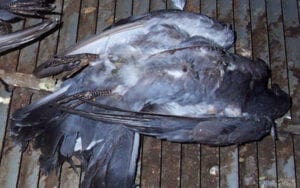
Source
Pigeon Patrol Products & Services is the leading manufacturer and distributor of bird deterrent (control) products in Canada. Pigeon Patrol products have solved pest bird problems in industrial, commercial, and residential settings since 2000, by using safe and humane bird deterrents with only bird and animal friendly solutions. At Pigeon Patrol, we manufacture and offer a variety of bird deterrents, ranging from Ultra-flex Bird Spikes with UV protection, Bird Netting, 4-S Bird Gel and the best Ultrasonic and audible sound devices on the market today.
Voted Best Canadian wholesaler for Bird Deterrent products ten years in a row.
Contact us at 1- 877– 4– NO-BIRD, (604) 585-9279 or visit our website at www.pigeonpatrol.ca
Pigeon/Pigeon Patrol / Pigeons Roosting / Vancouver Pigeon Control /Bird Spikes / Bird Control / Bird Deterrent / Pigeon Deterrent? Surrey Pigeon Control / Pest /Seagull deterrent / Vancouver Pigeon Blog / Birds Inside Home / Pigeons in the cities / Ice Pigeons/ What to do about pigeons/ sparrows , Damage by Sparrows, How To Keep Raccoons Away, Why Are Raccoons Considered Pests/ De-fence / Pigeon Nesting/ Bird Droppings / Pigeon Dropping/ woodpecker control/ Professional Bird Control Company/ Keep The Birds Away/ Birds/rats/ seagull/pigeon/woodpecker/ dove/sparrow/pidgeon control/pidgeon problem/ pidgeon control/flying rats/ pigeon Problems/ bird netting/bird gel/bird spray/bird nails/ bird guard

 The male starts the nest building process by sitting on the nest site and calling for a mate. Once he has attracted a female to the site, he begins the search for nest material, bringing a single twig at a time to the female who tucks it in around her. During the day, the male sits on the completed nest that usually contains one or two eggs. The female takes over nest duties at night. Pigeons can nest year round and can produce up to 10 young a year.
The male starts the nest building process by sitting on the nest site and calling for a mate. Once he has attracted a female to the site, he begins the search for nest material, bringing a single twig at a time to the female who tucks it in around her. During the day, the male sits on the completed nest that usually contains one or two eggs. The female takes over nest duties at night. Pigeons can nest year round and can produce up to 10 young a year.









